
Wanna Bet?
Staking the Sportsbet farm on the move to IPTV.
Text:/ Andy Ciddor
Images:/ Jarrod Bell
Bookmaking has always been a pure information business, where knowing the form, knowing the weather, knowing the spread of the odds and knowing everything else possible about the circumstances of the wager is hugely important in offering punters the most attractive (yet most profitable) odds. Sportsbet offers the opportunity to place an online bet on the outcome of events ranging from almost any sporting fixture on the planet, to the name of the next Pope, or the gender (male, female or transgender – seriously) of the next winner of Big Brother. While it’s amusing to able to bet on the next monarch to rule Australia, it’s a bit disappointing that you can’t make a wager on the longevity of the remaining Mars rovers.
ALWAYS AT ODDS
To offer this astounding range of betting opportunities requires the teams at Sportsbet to be able to research almost everything that’s likely to be happening anywhere in the solar system, formulate an appropriate wager, track the factors affecting that wager and set appropriate odds, then track the outcome of the event before paying out on the wager. Clearly this takes more research than whipping out a smartphone and Googling the average time required for a pair of flies to crawl up a wall. The Sportsbet researchers, statisticians, actuaries and bookmakers need continuous access to pretty much everything that’s happening in the known universe, with a special emphasis on contests of all kinds whose outcomes may be of interest to punters and their bookmakers. Fortunately for 21st-century bookmakers, they no longer have to invest in their own teams of observers and information runners at the site of every event, nor do they need fleets of surveillance satellites to track what’s happening across the globe.
There’s already an insatiable worldwide demand for this very information from legions of highly-trained and extremely discerning armchair sports participants in clubs, sports bars, casinos, lounges and lunch-rooms all across the planet. To meet this demand, trillions of dollars have been invested in the most sophisticated outside broadcast facilities, digital scoreboards, communications infrastructure, performance analytics, computer-assisted expert commentary, and data storage and retrieval systems, to ensure that no bunch of school kids anywhere on earth can engage in a game of French Cricket without being observed, commented on and replayed in super-slow-mo.

INFORMATION TECHNOLOGY
This of course is exactly the information required by punters and bookmakers alike, but the challenge for Sportsbet is being able to access this continuous deluge of information and filter out and digest the relevant information needed to offer instantaneous assessment and responses to changes in circumstances or the outcomes of events. To achieve this each of Sportsbet’s gaming room and trading operators are provided with multiple screens, each with access to the entire panoply of Australian television media. The sources available include every possible news and sports channel from an RF Foxtel feed and an off-air MATV feed of DVB-T (Digital Video Broadcast – Terrestrial) services which provides, ABC services (ABC1, ABC2, ABC3 and ABC News24), Seven network services (Seven, 7Two and 7Mate), Nine network services (Nine, Go! and Gem), Ten network services (Ten, Eleven and One) and SBS services (SBS, SBS2, SBS3 and NITV). The shopping channels are not included in the distribution.
MATV IN THE BLOOD
When Sportsbet moved into their 367 Collins Street, Melbourne, premises in 2009, DRM Audio Visual was engaged to provide the original AV fitout which included delivery of all of the above services via an MATV (Master Antenna Television) broadband RF network, delivered over low-loss coaxial cable via signal combiners, distribution amplifiers and splitters to a set-top tuner/decoder at every screen. High frequency broadband RF over coax is a slightly capricious beast that can be degraded by quite minor mishaps with cabling and connectors, and requires care and constant vigilance to keep it working at its very best. It’s a more than good-enough solution for a mix of predominantly standard definition signals, and was indeed the best-tested and most proven reliable system available at the time.
After the investment in Sportsbet by the Irish Paddy Power bookmaking group in 2009, the company continued to grow dramatically up until 2012, with DRM AV continuing to add more MATV workstations, more meeting room installations and video conferencing facilities, while continuing to provide maintenance and support for the entire operation. During this time DRM were making the case to Sportsbet for IPTV as an alternative to MATV for the feeds to its every-increasing number of screens.
“”
Sportsbet's researchers and bookmakers need continuous access to pretty much everything that’s happening in the known universe
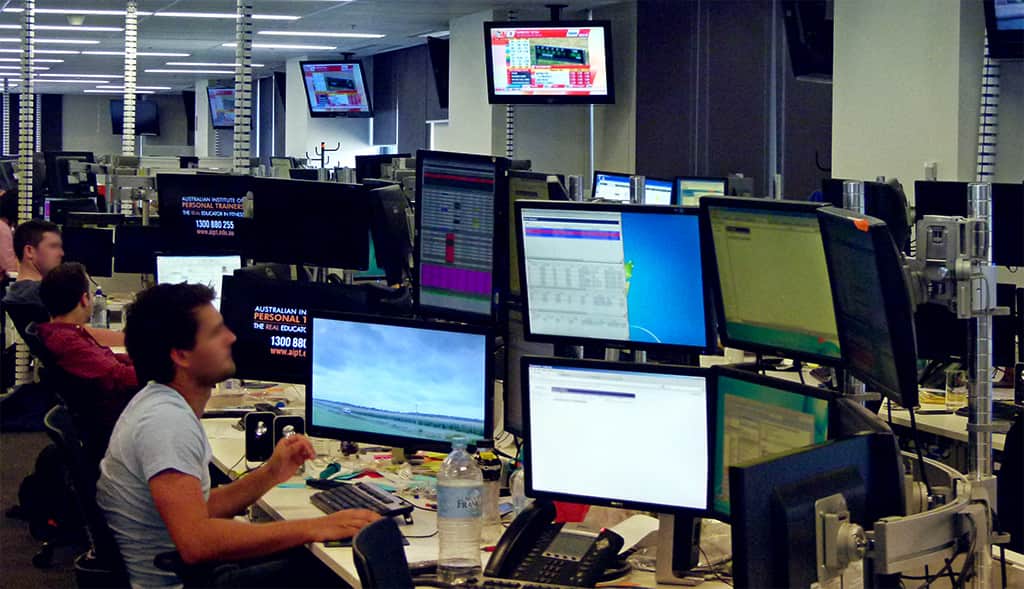
IPTV FUTURE
In early 2013 DRM was approached by builders FDC Construction & Fitout to undertake the AV component of a significant expansion of Sportsbet’s facilities over a further five floors of 367 Collins street. This 8000sqm fitout incorporated a new reception area, boardrooms and meeting rooms, open plan workspaces for the gaming room and the trading floor, storage, utilities, a staff café and inter-tenancy stairs.
Designed and specified by consultants Cardno ITC, the AV elements of the project entailed some 2500 hours of on-site work over four months. The project included the installation of a new head-end system feeding both MATV and IPTV signal distribution, 200 LCD screens, 64 IPTV workstations, 12 projection systems, nine video conference facilities and 25 AMX control systems.
Some of the systems on the new trading floor were migrated from the older facility and continue to operate on RF/MATV feeds, albeit from the new head-end, which now includes DVB-T feeds. All the new trading stations operate entirely on IPTV, while the vast majority of the screens public areas such as reception, staff areas and the café are fed from the IPTV network. The sources available at each screen include the aforementioned Foxtel and free-to-air digital terrestrial services, plus two digital signage channels originating as HDMI feeds from a pair of PCs mounted in the head-end racks alongside the Foxtel and DVB-T decoders. Public screens are programmed to default back to these corporate digital signage feeds after being used to view other sources.
The Foxtel section of the head-end system consists of a signal from an RF receiver split off to 17 independent Foxtel decoders. The audio and video the outputs of each decoder are split through a Kramer VM-2N distribution amp to feed both the RF and IPTV systems. All Foxtel streams support HDCP copy protection as required under the terms of their licence. The DVB-T signal is collected by a master antenna and split via an IKUSI UDU-813 to feed both the RF and IPTV systems.
On the IPTV side, the DVB-T signal is processed by Omniscreen OMM-1400 head-end decoders to produce the IP streams for each channel, while Omnistream MPEG2 and H.264 encoders generate IP streams from the decoded Foxtel AV signals. An Omniscreen IPTV server is used for control and monitoring of IP streams, bandwidth control, electronic program guide creation, channel allocation, zoning and control of set top boxes.
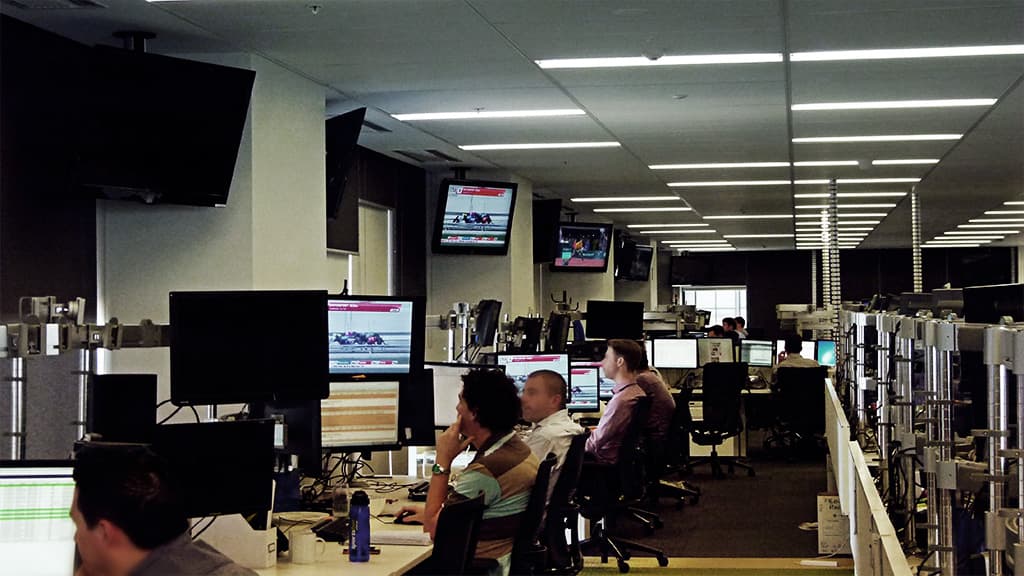
DISPLAYS FOR A WIN
Over on legacy RF side, each Foxtel AV signal is then fed via daisy-chained Ikusi MCP-811 RF modulators into an Ikusi AMX-400 RF combiner where it’s mixed with the DVB-T RF feed for building-wide distribution. At each workstation the MATV feed is split by an Ikusi UDU-612 to feed four Toshiba 24W2300A (24-inch, full HD) LCD televisions.
Display panels fed by IPTV each have a small IPTV ‘set-top box’ located at the back of, or adjacent to, the screen, which outputs stereo audio, composite video and a full HDMI 1.3A compatible multimedia stream at resolutions up to 1080p (HD). The set-top box includes an IR remote capability and can also be remotely controlled by the IPTV management system.
SEAMLESS SWITCH
The only moment of tension in the whole fitout was the overnight relocation of some existing trading stations from the old trading area to the new trading floor, but the stations were up and running again in their new home in time for the start of trading the next morning.
DRM AV have developed a relationship of confidence and trust with Sportsbet over the years which enabled them to influence Sportsbet’s thinking about taking a small, but critical punt in the planning of the substantial video distribution network in their new facilities. Sportsbet responded by recommending DRV as contractors for the supply, installation and maintenance of this critical asset for Sportsbet’s business. Does anyone want have a small wager with me on whether the next round of expansion at Sportsbet will include more IPTV?

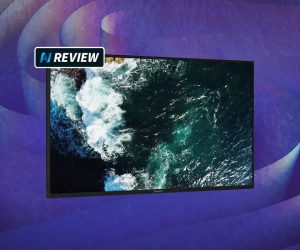






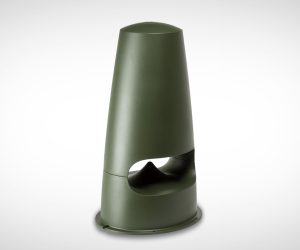
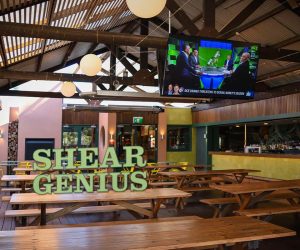





RESPONSES